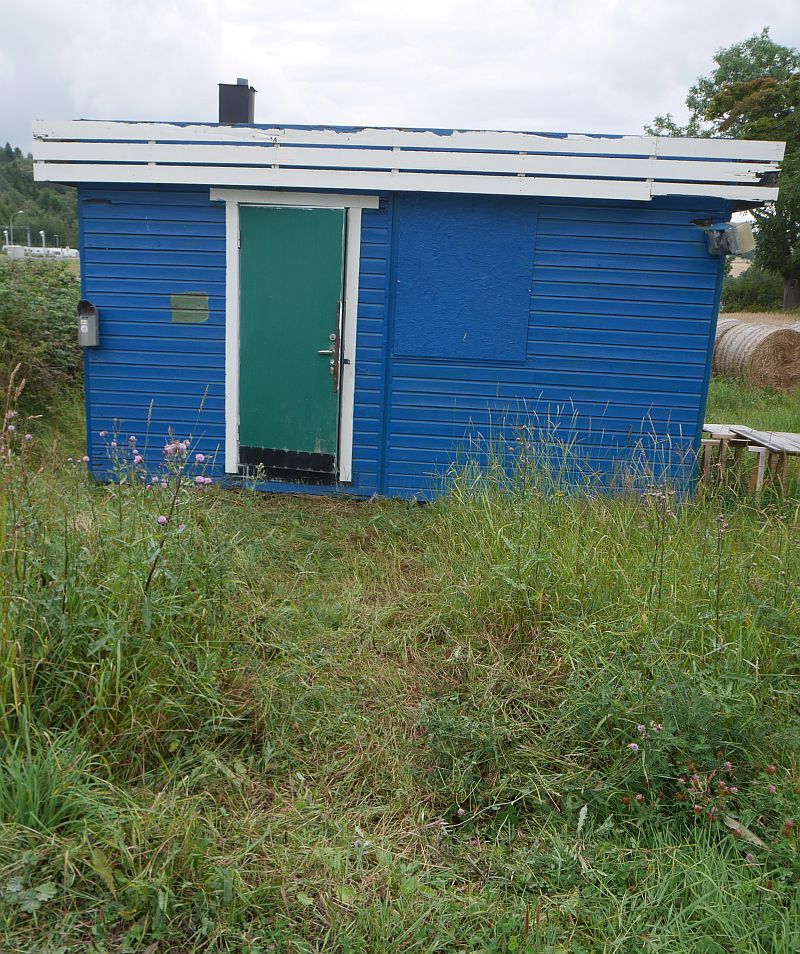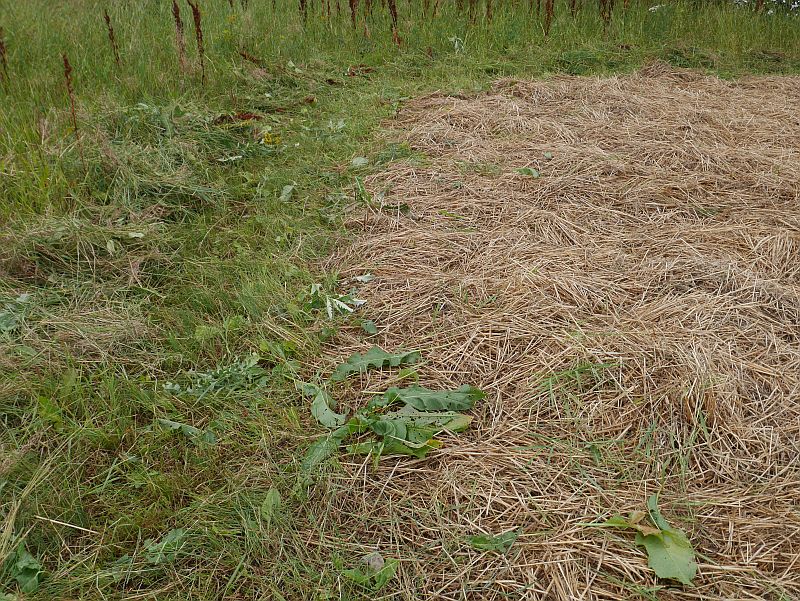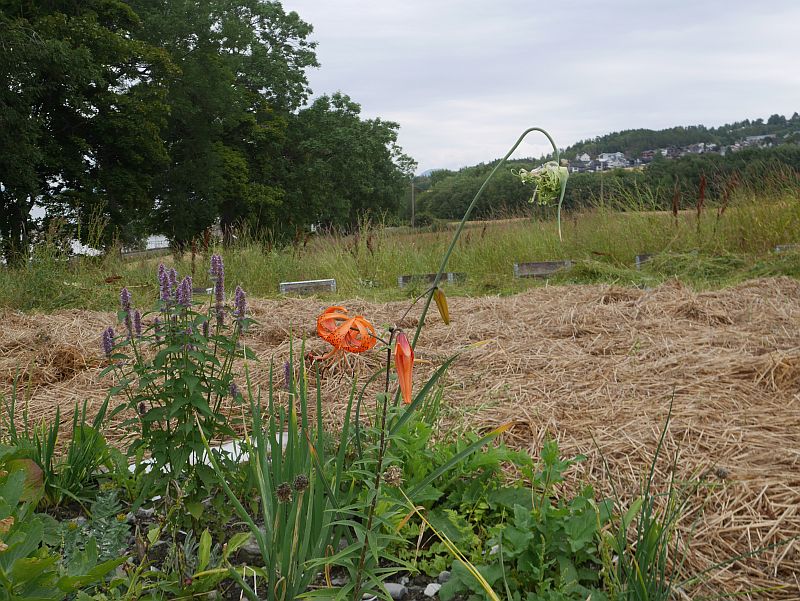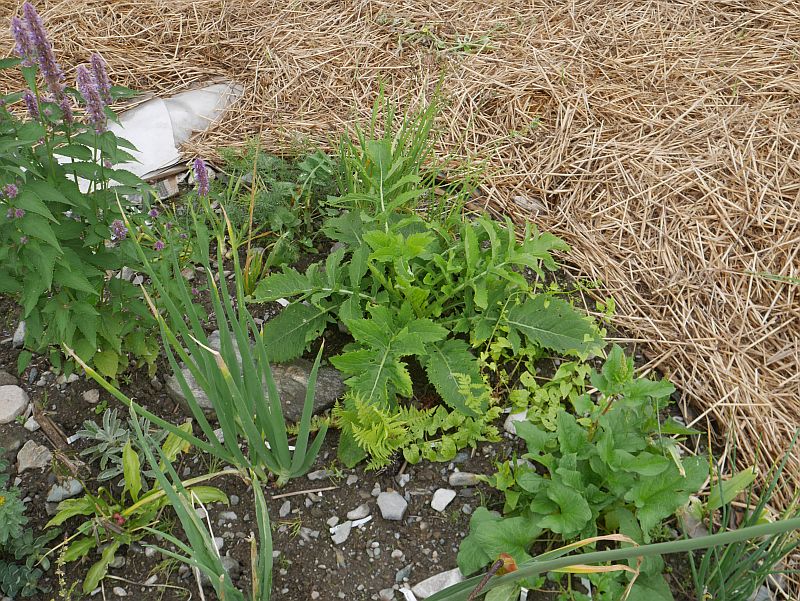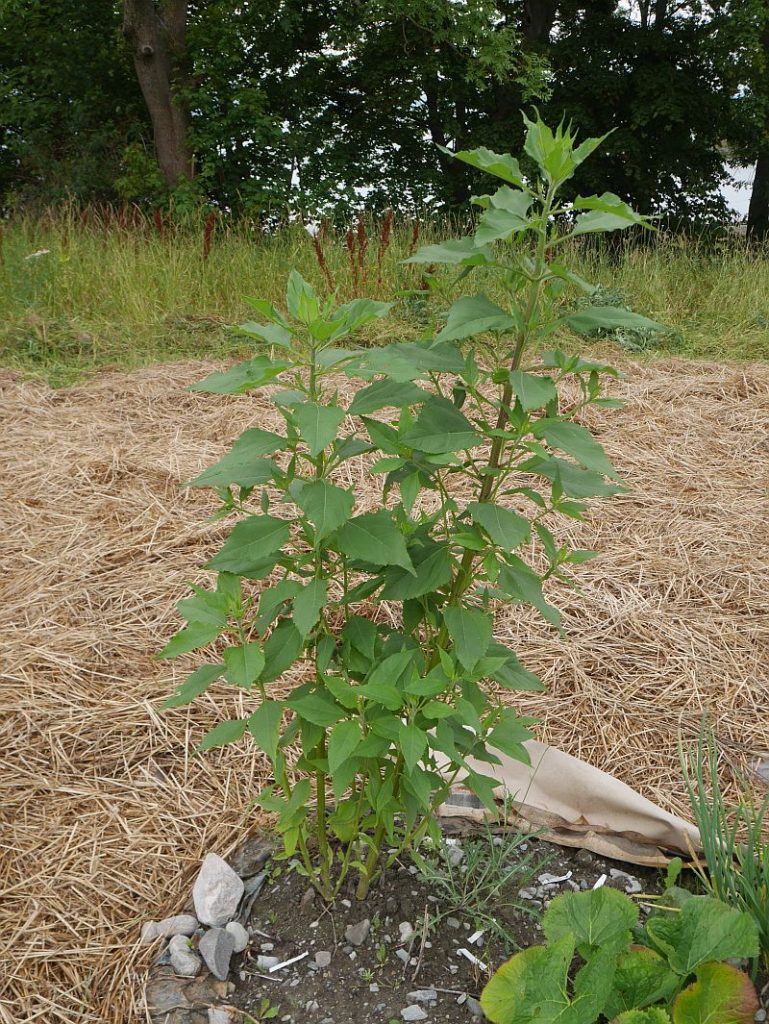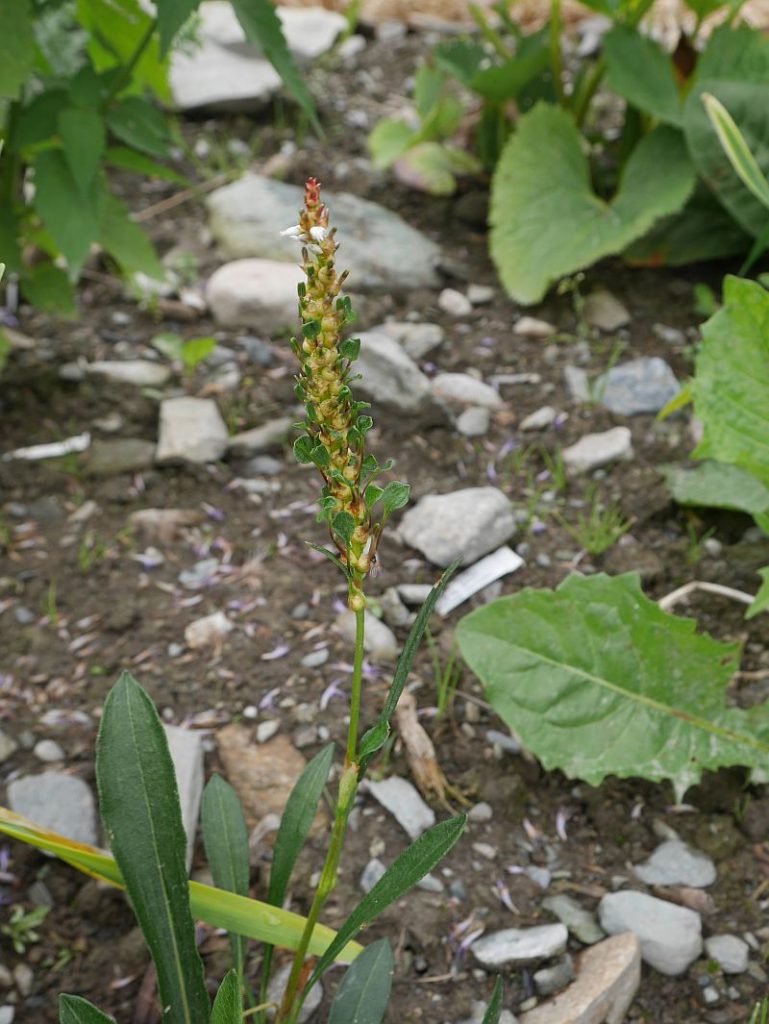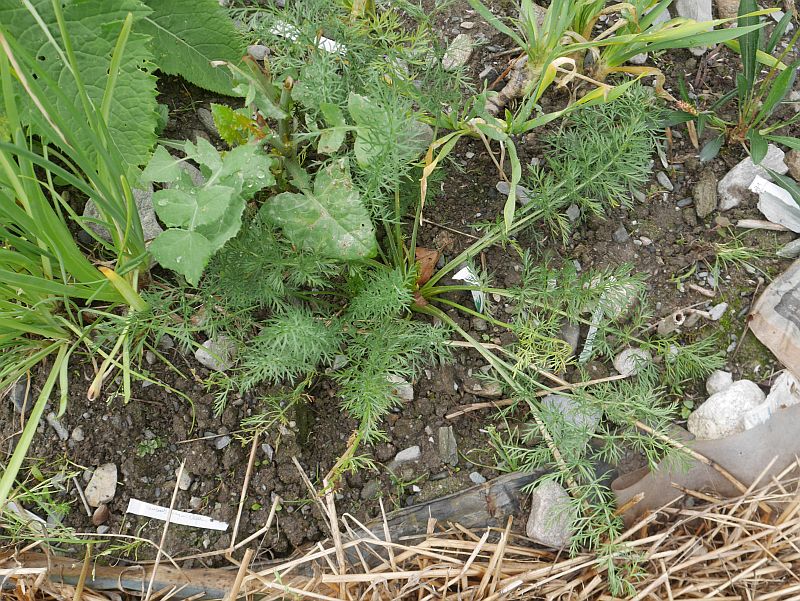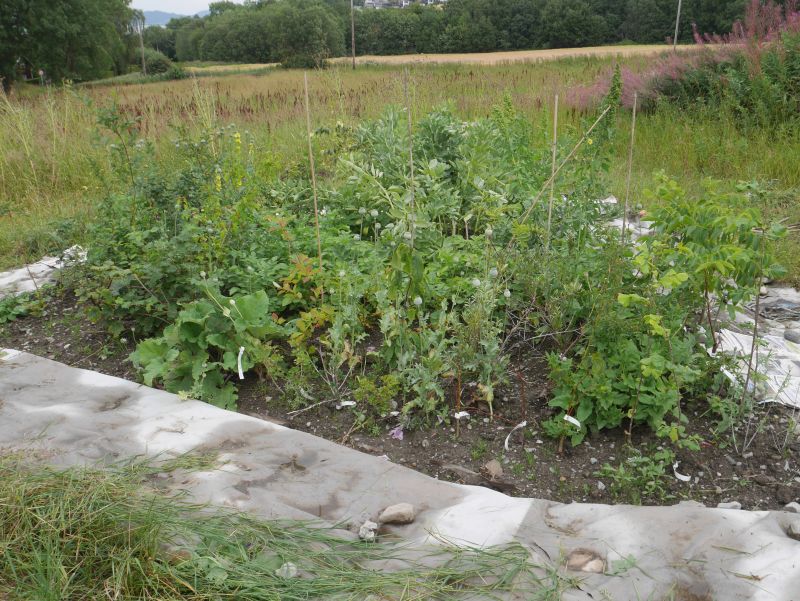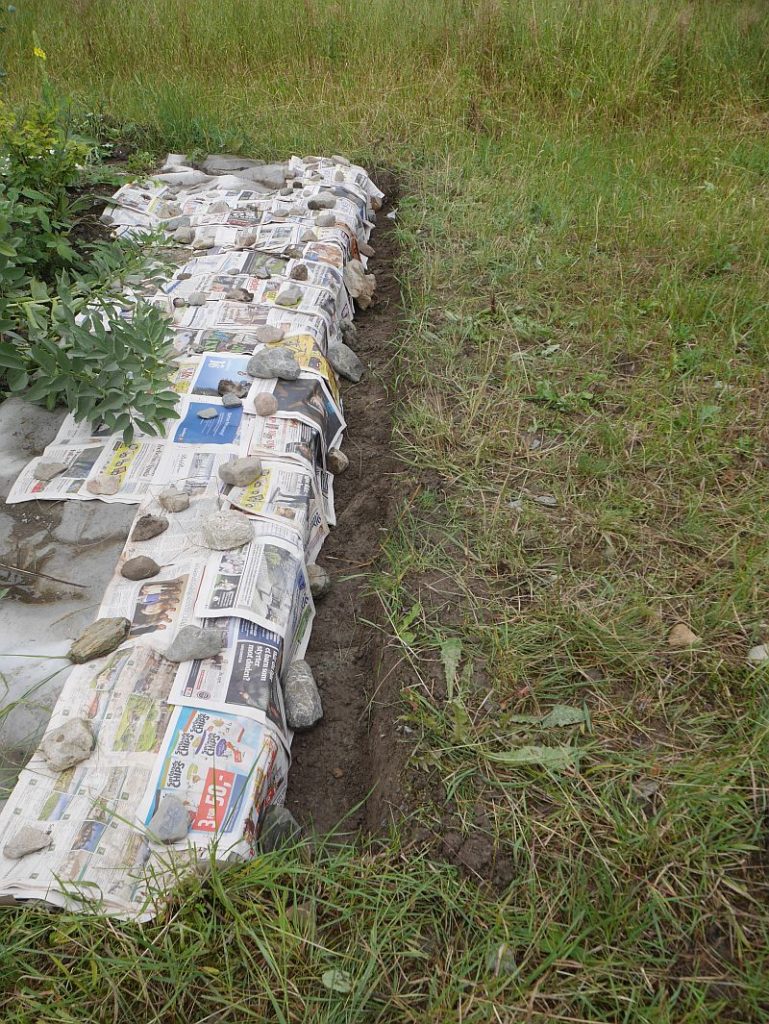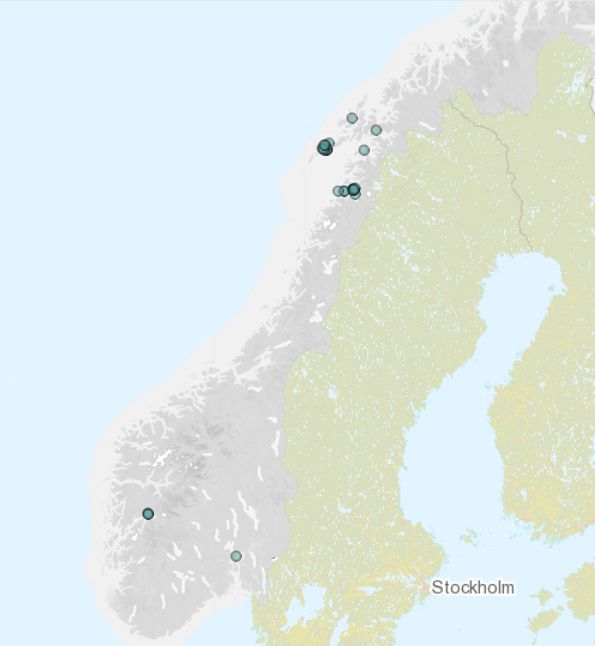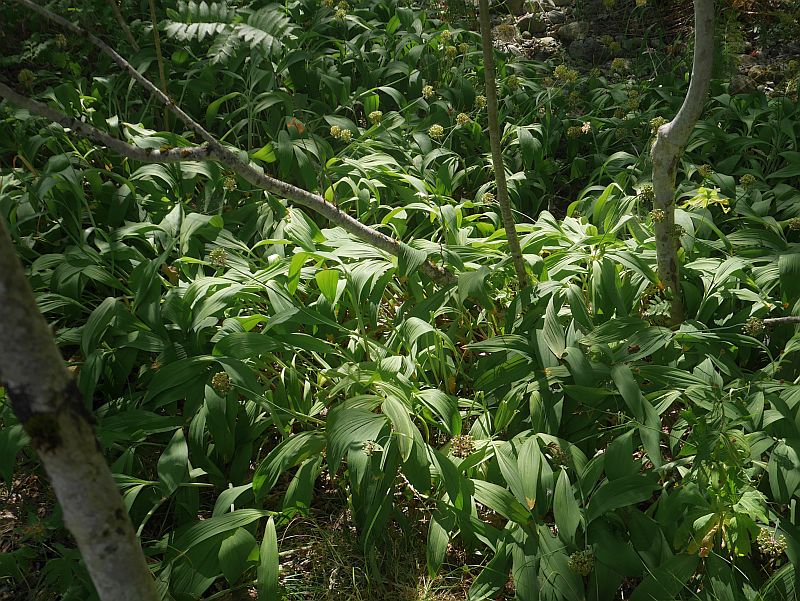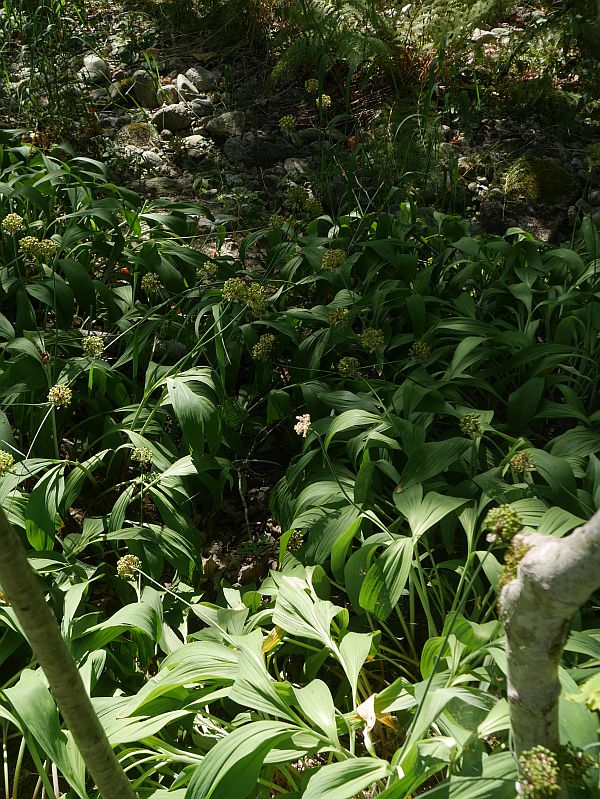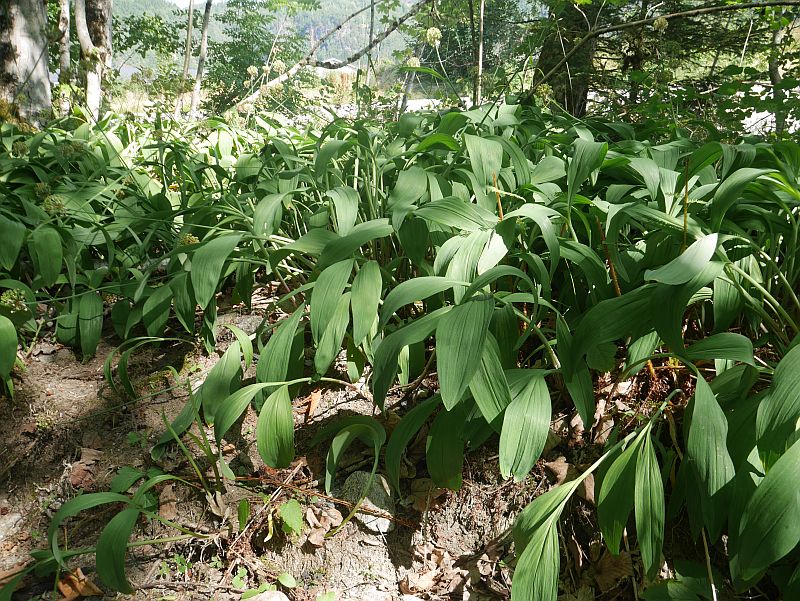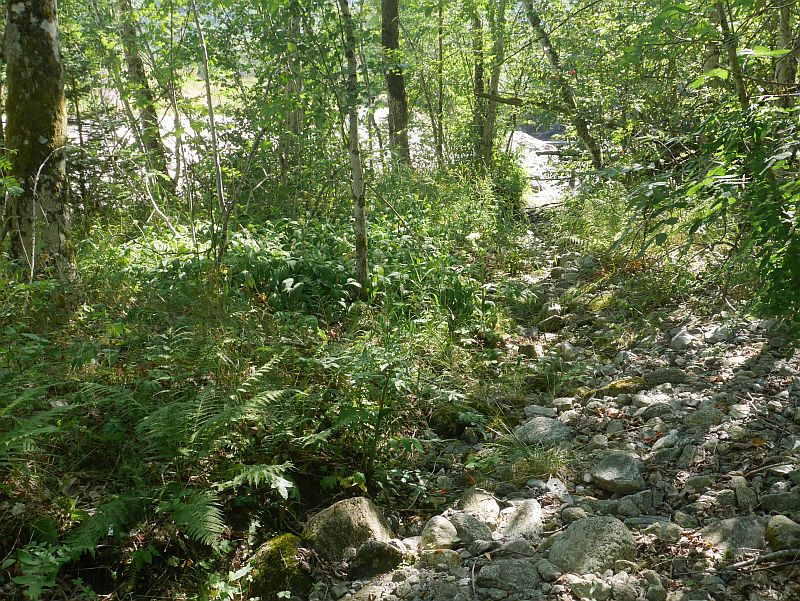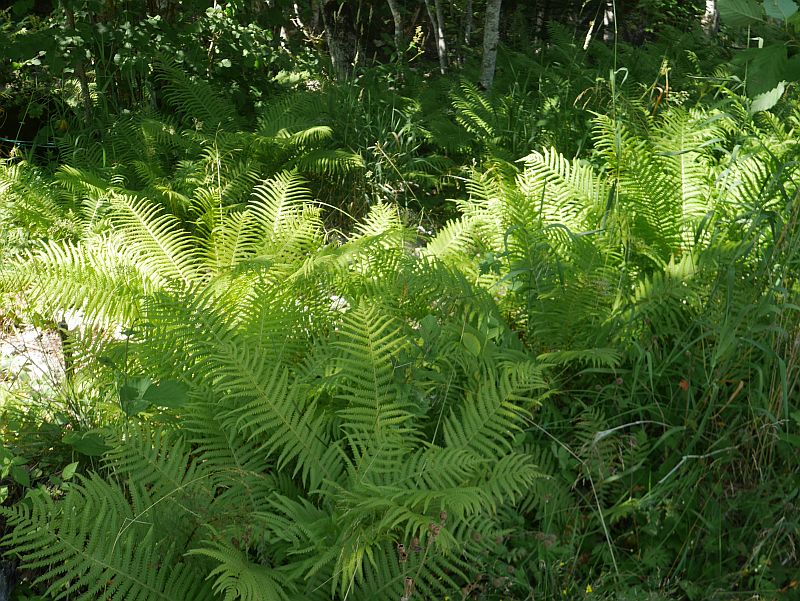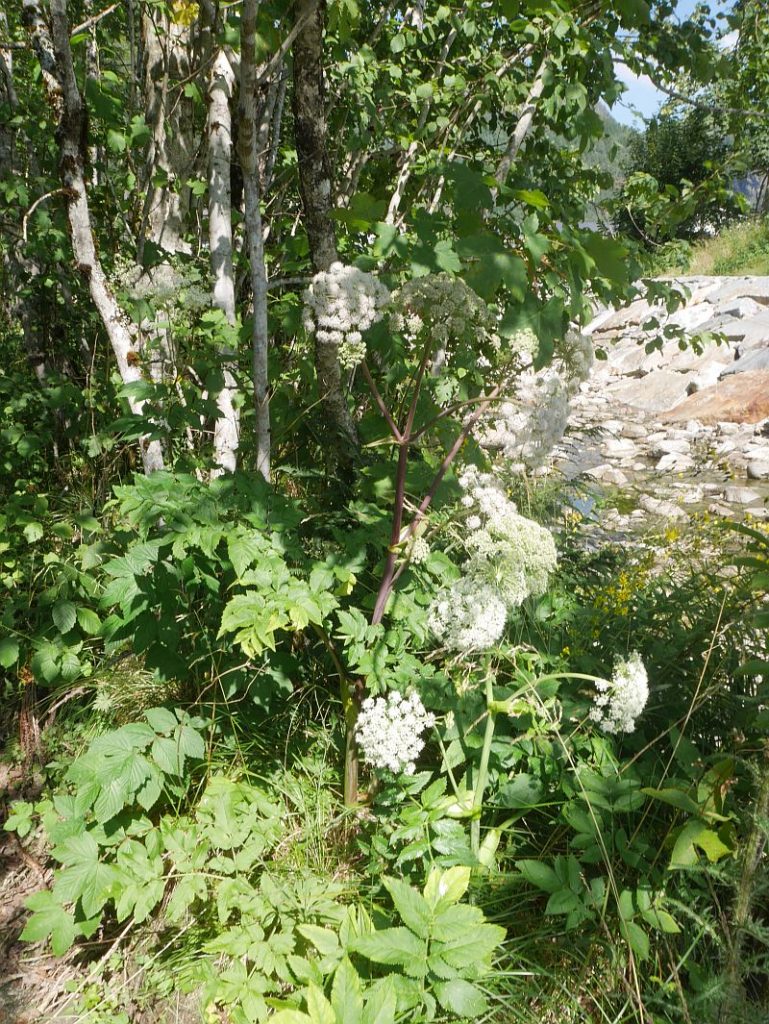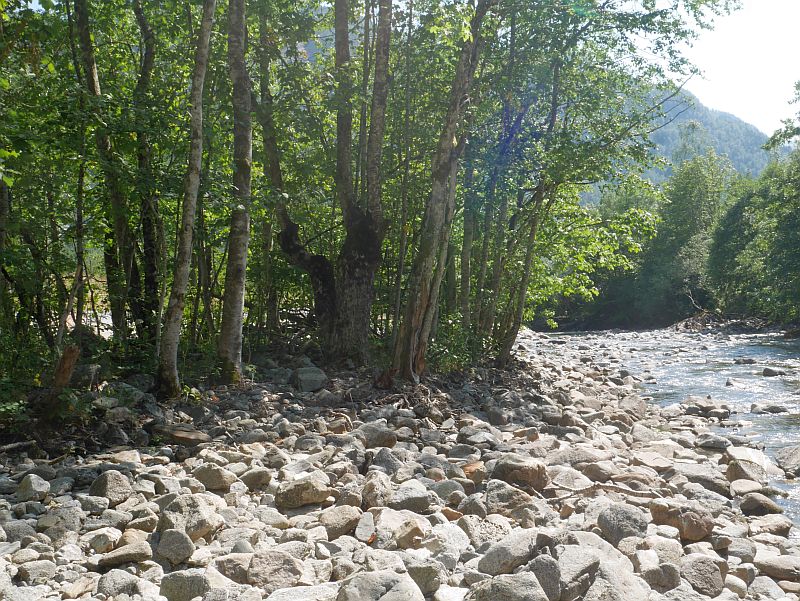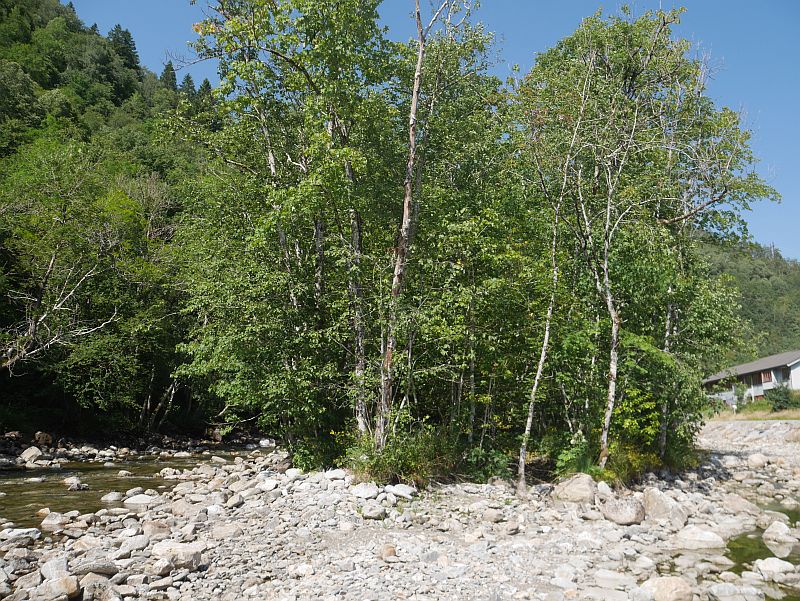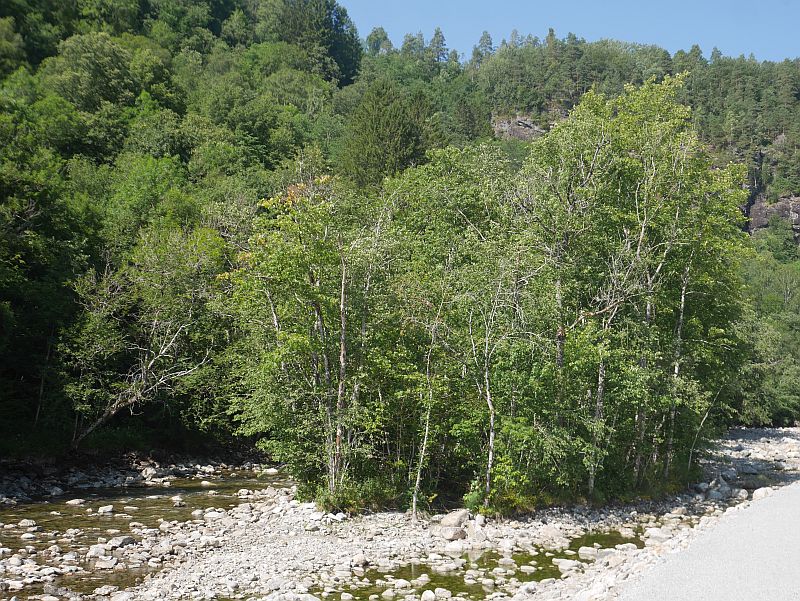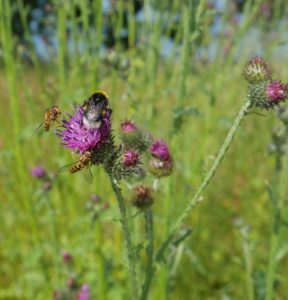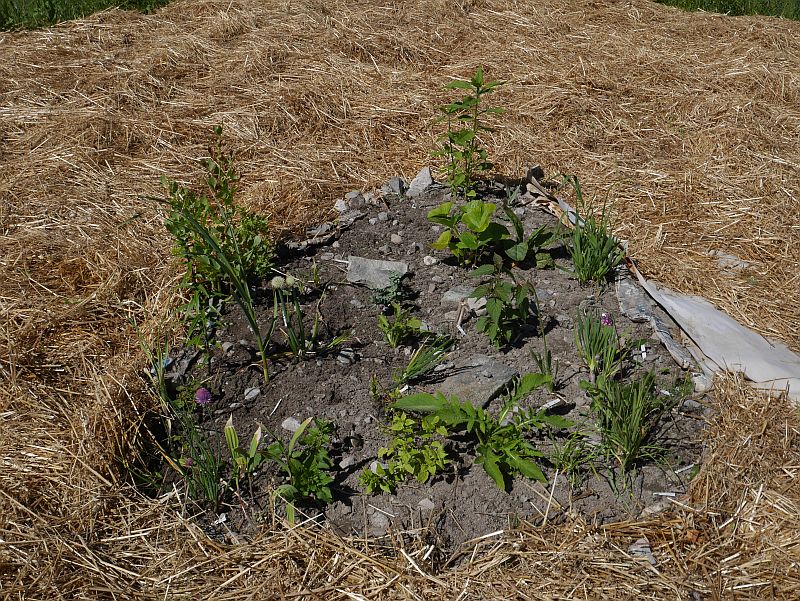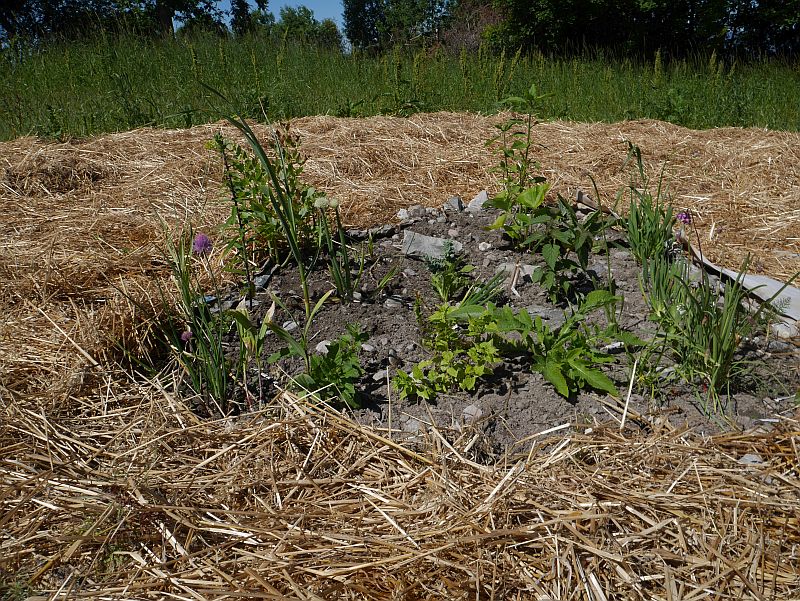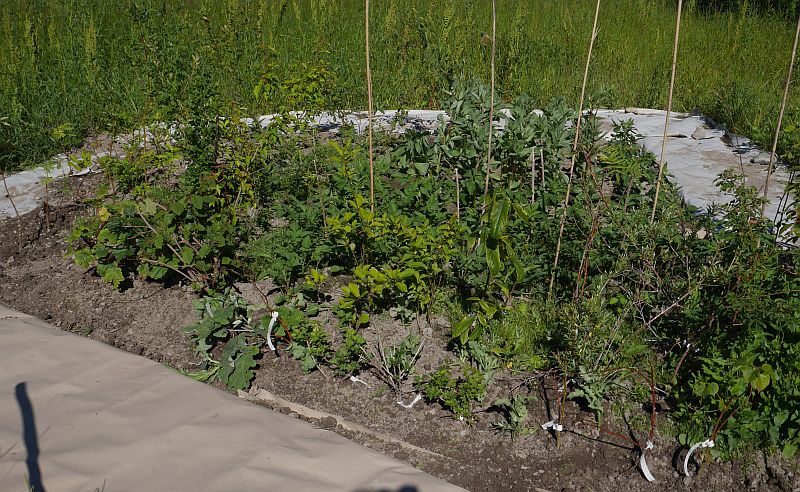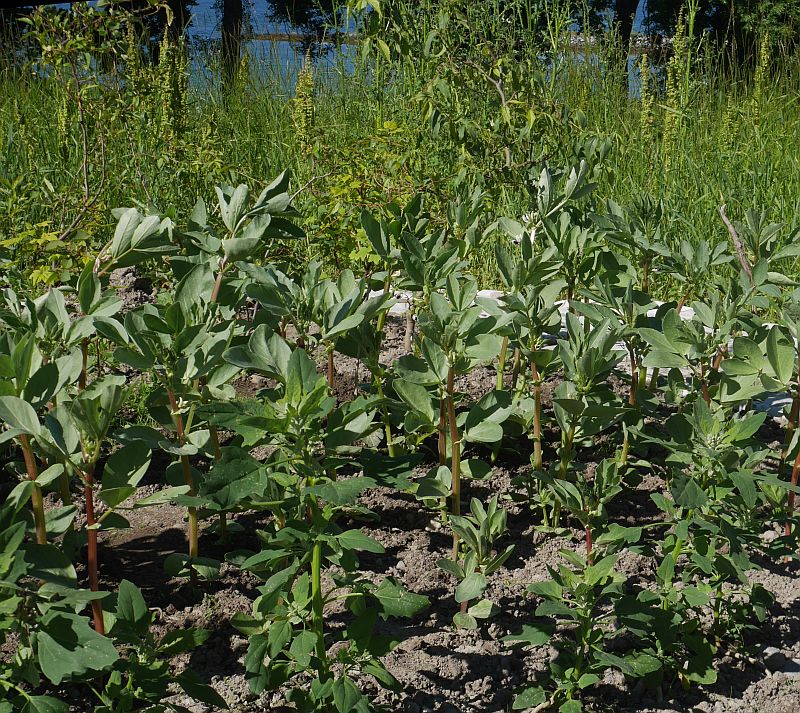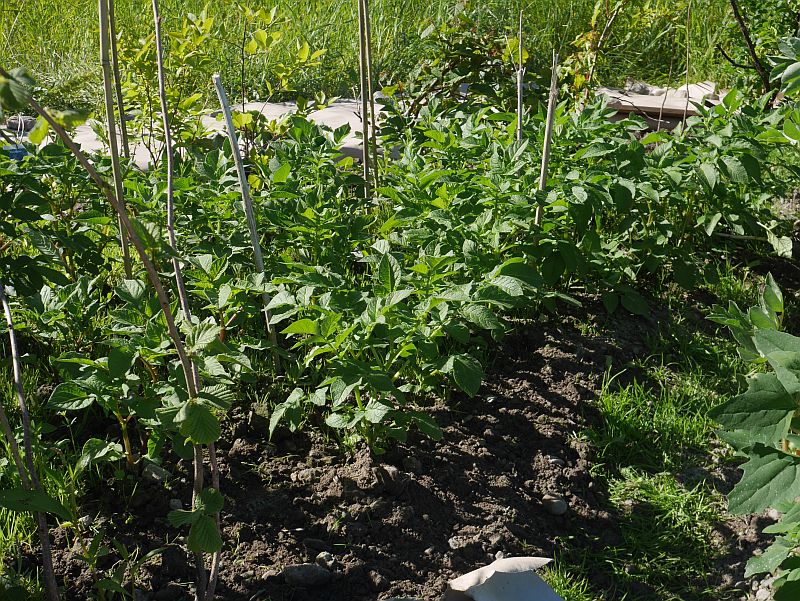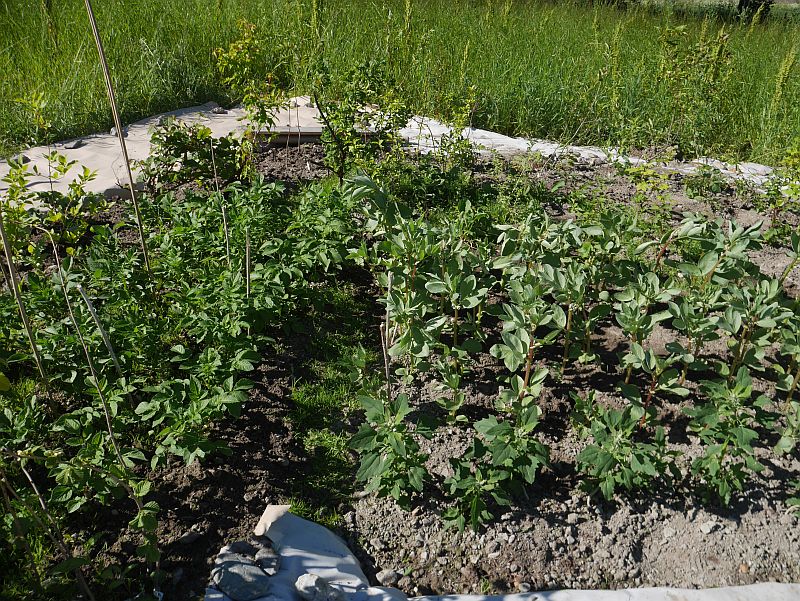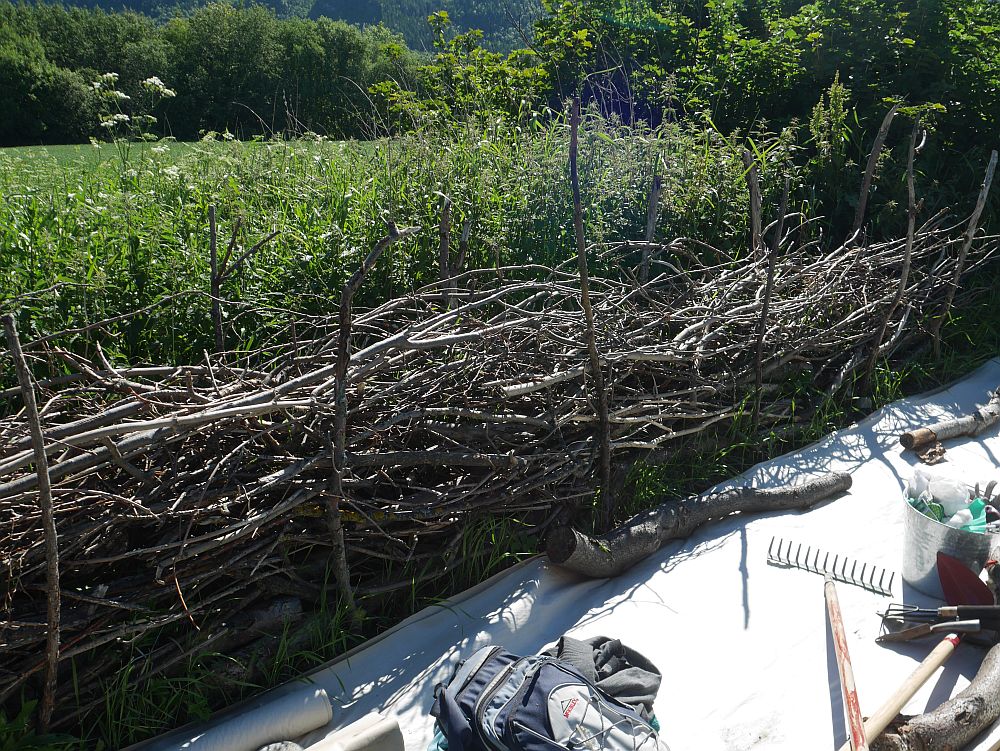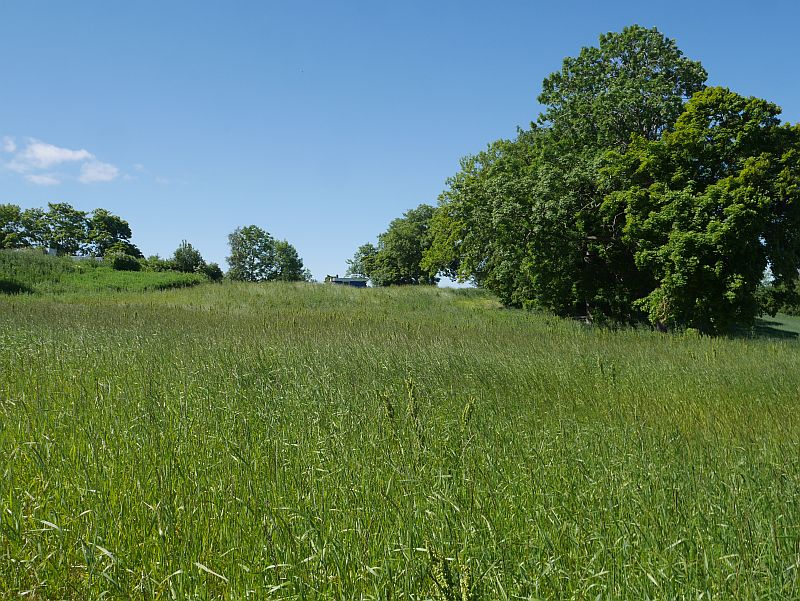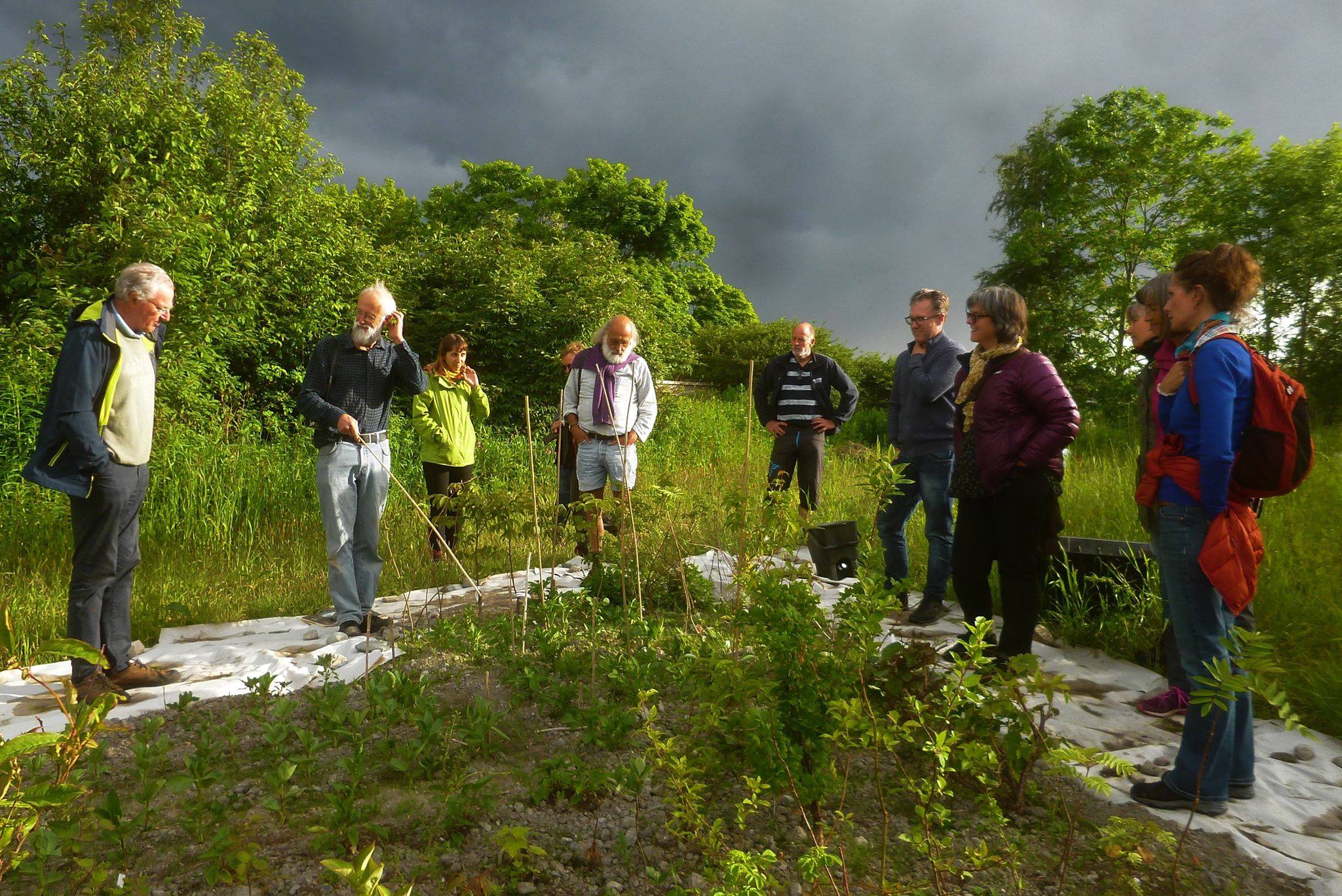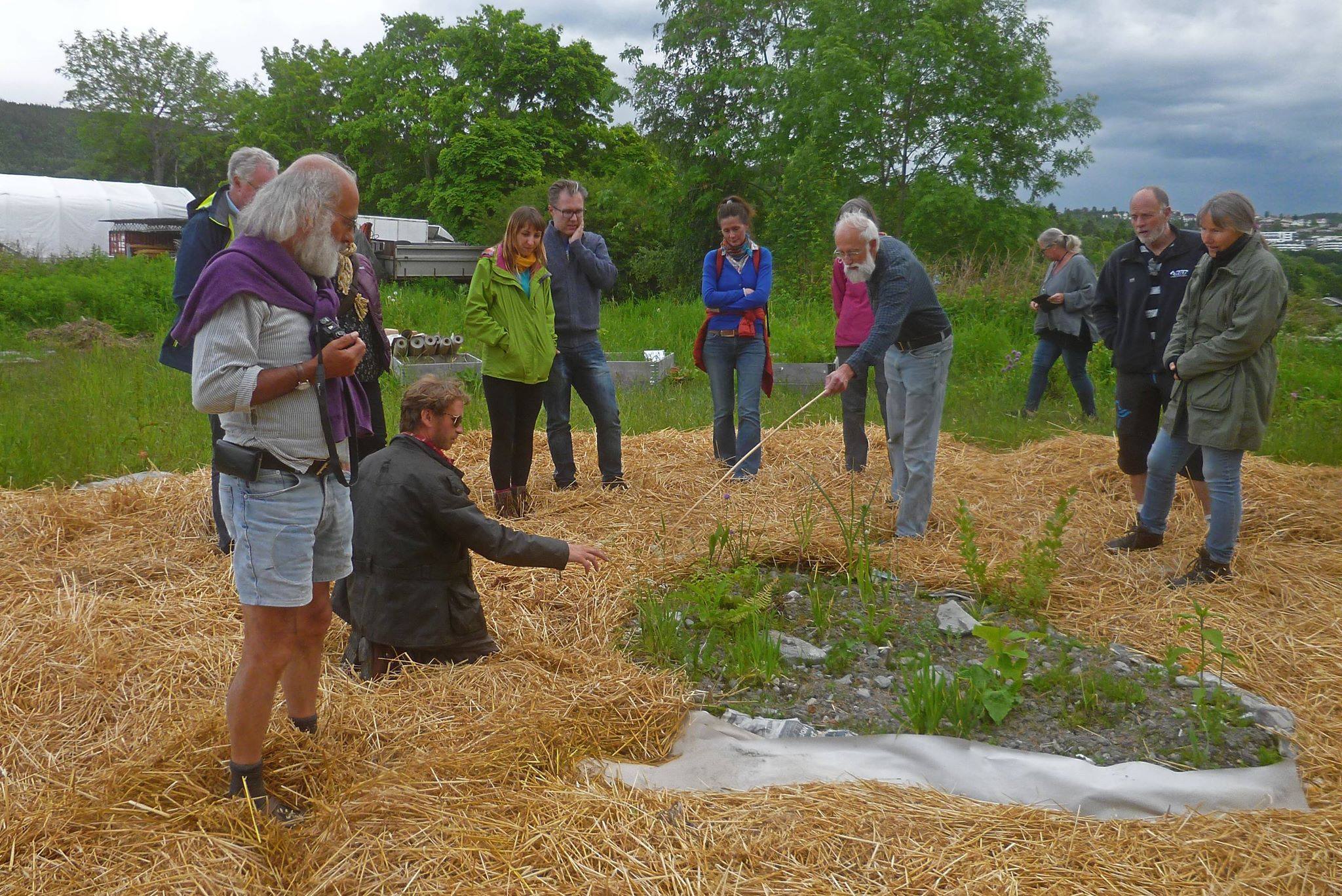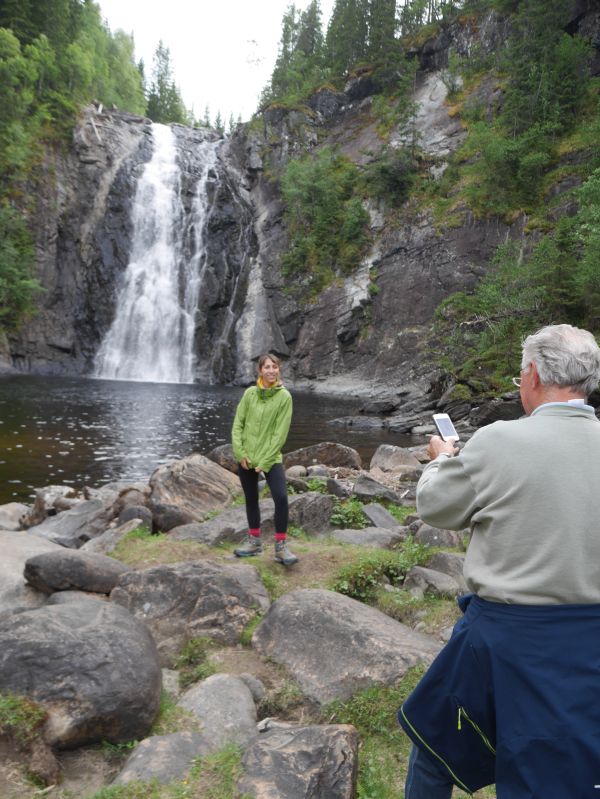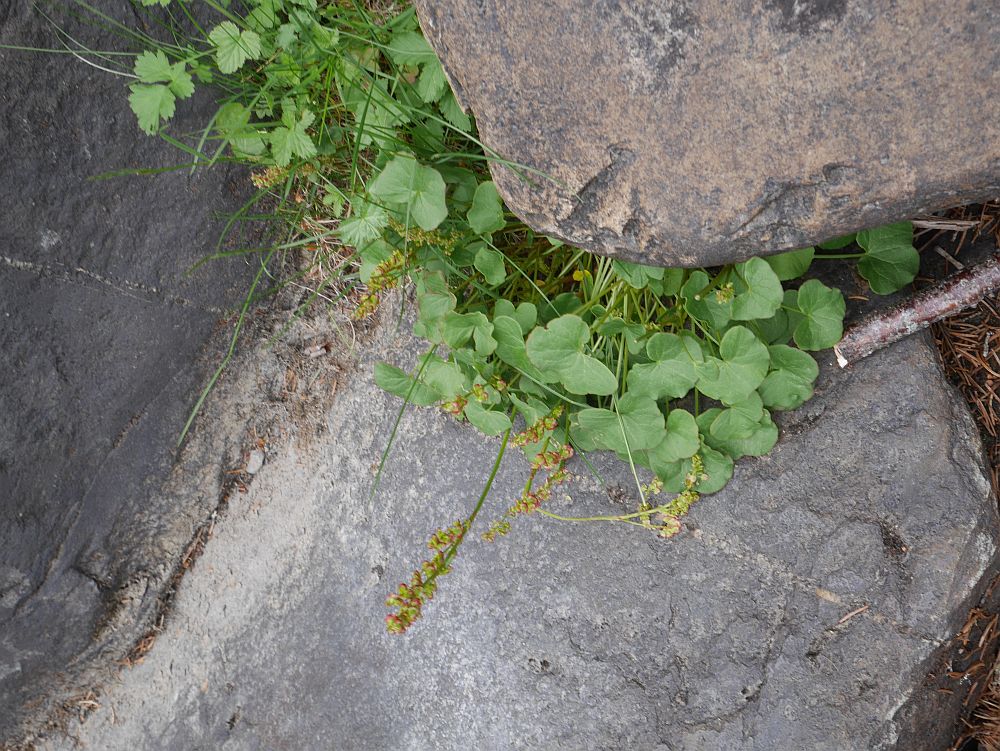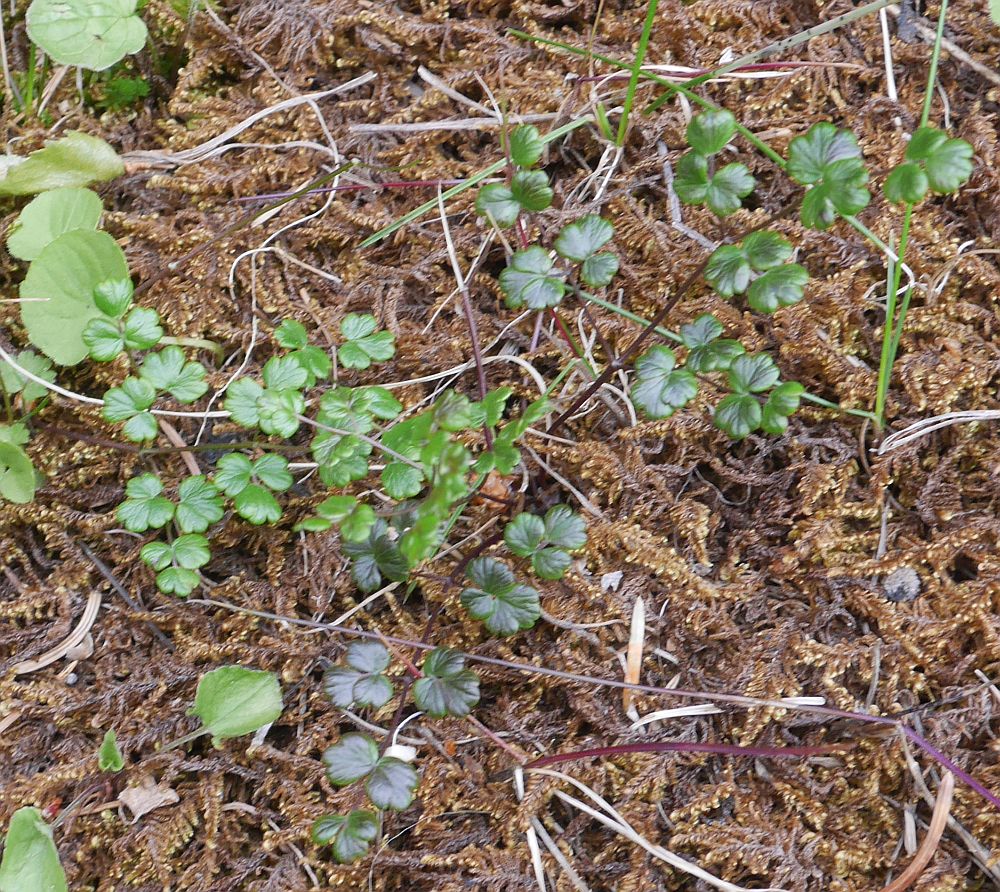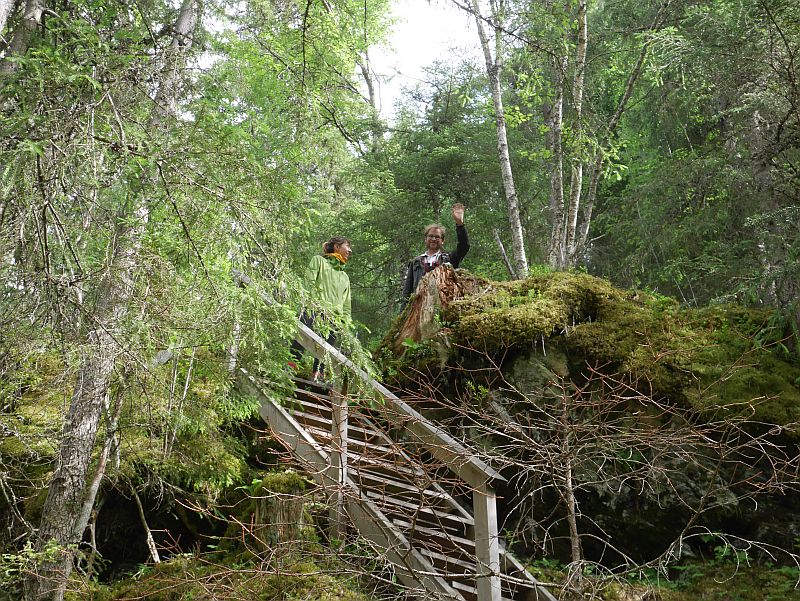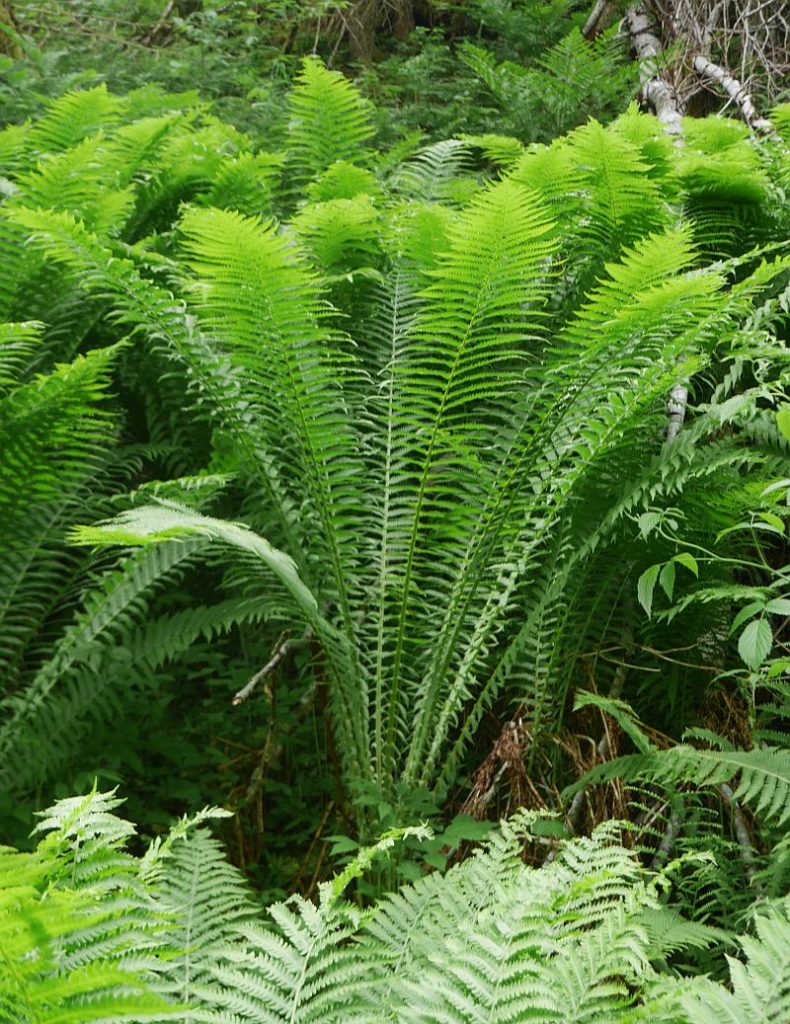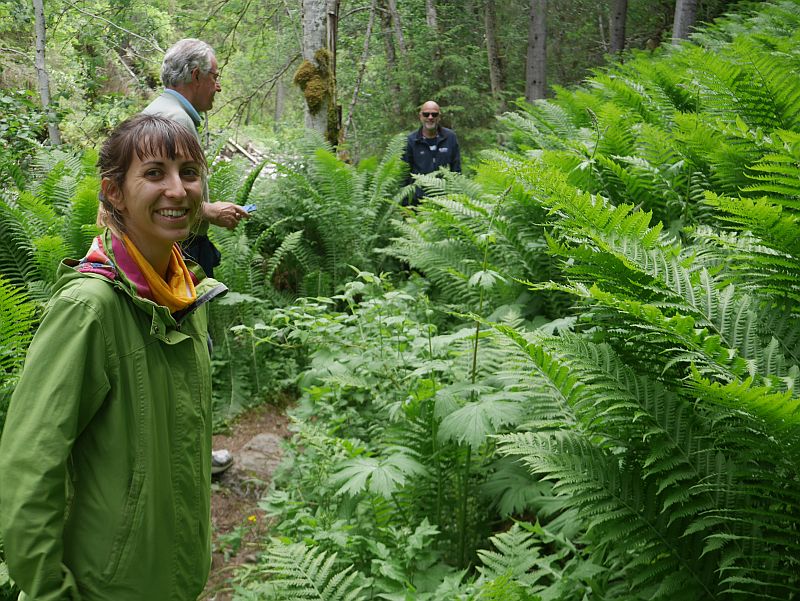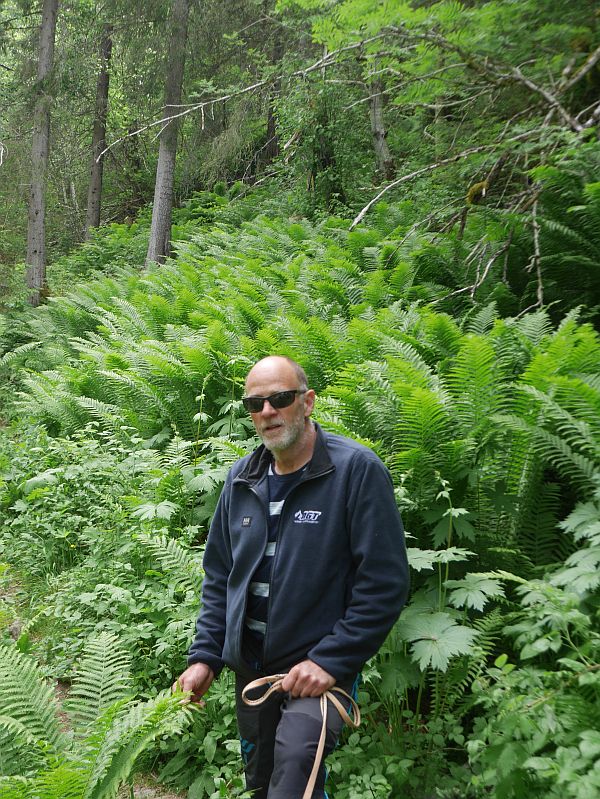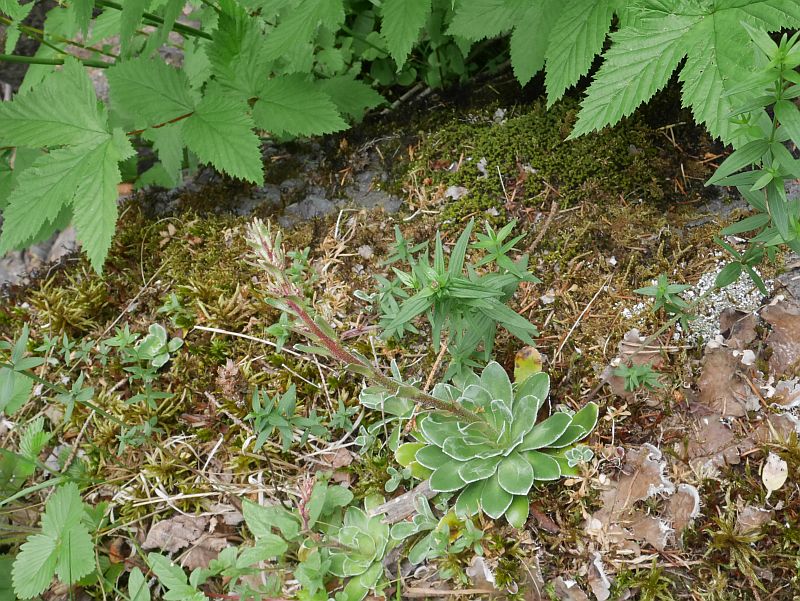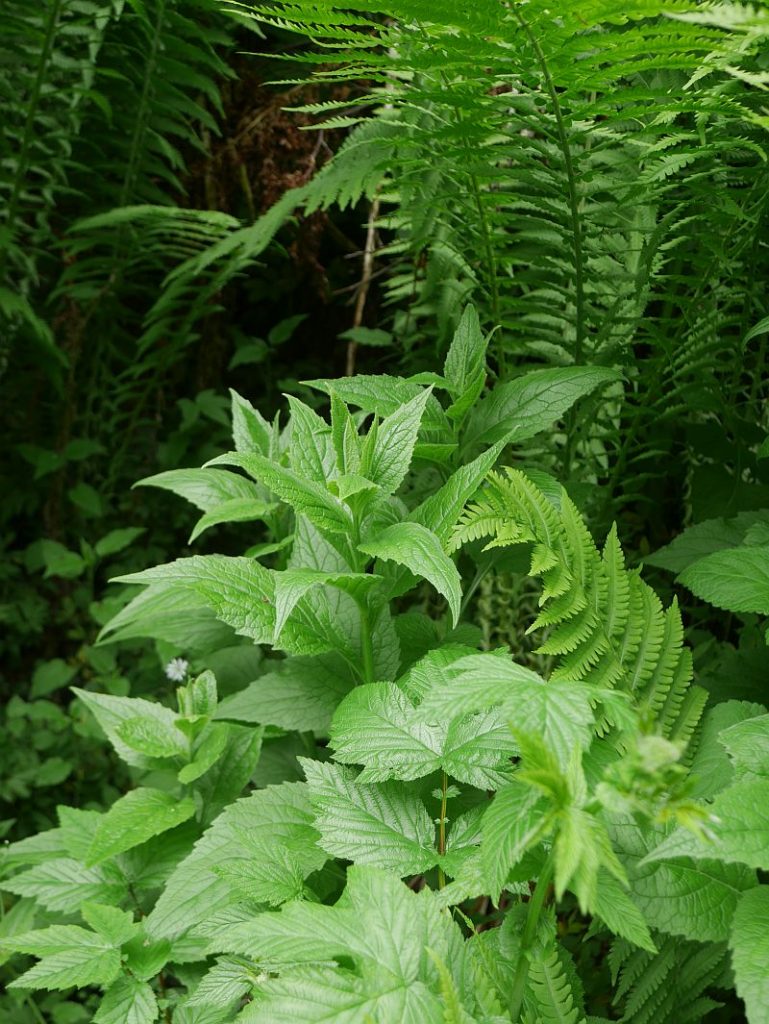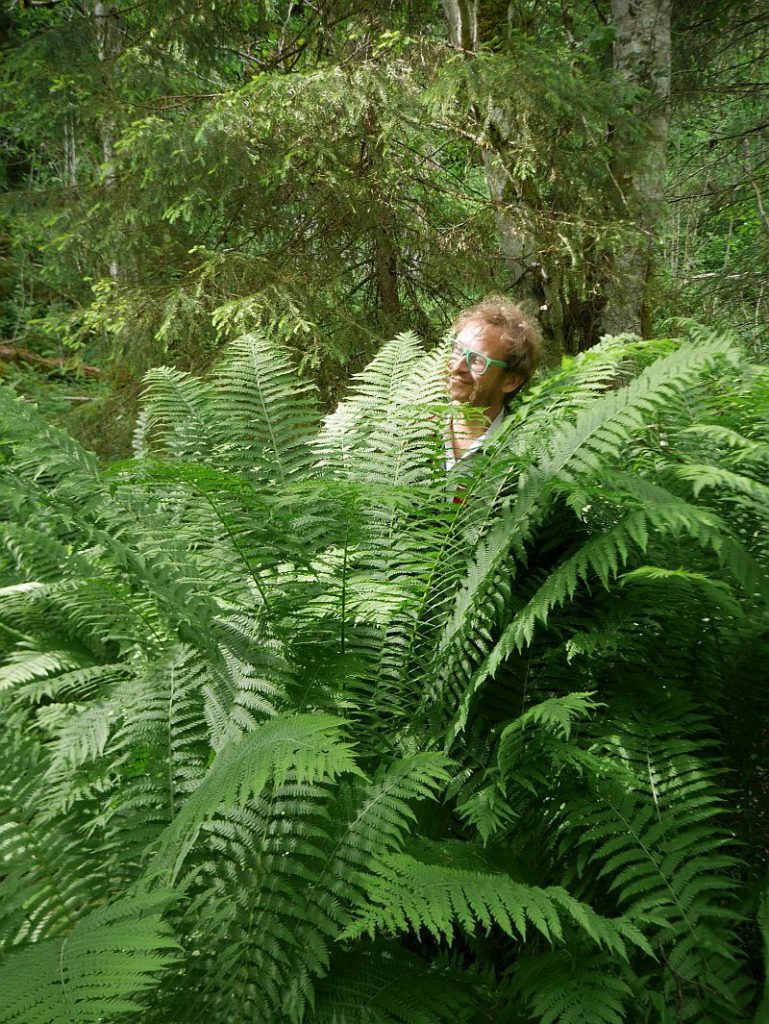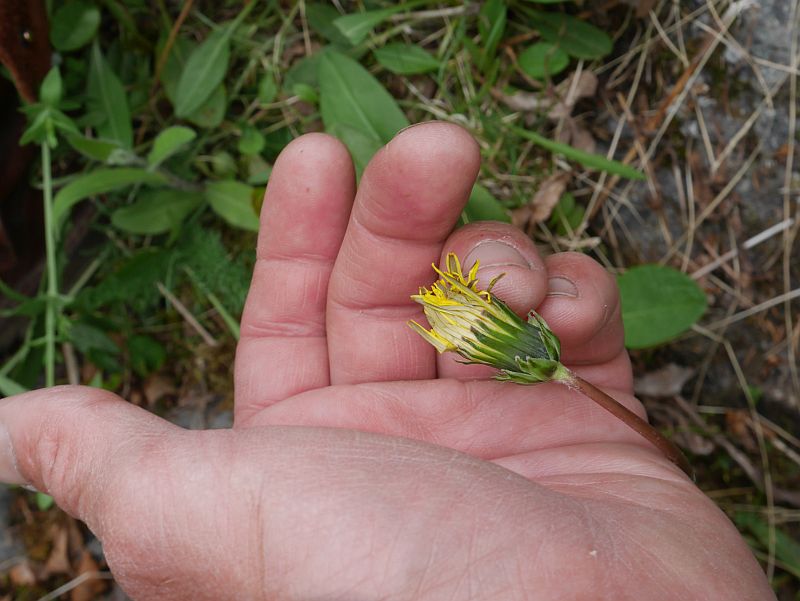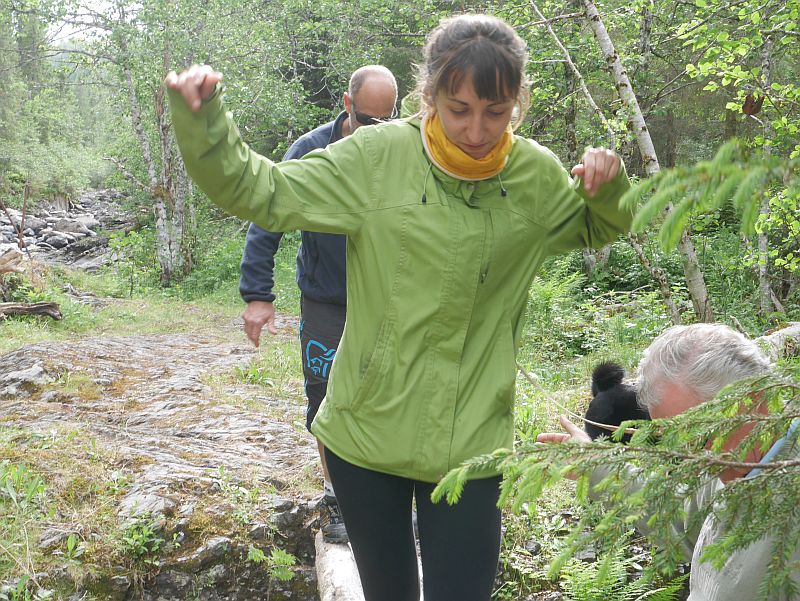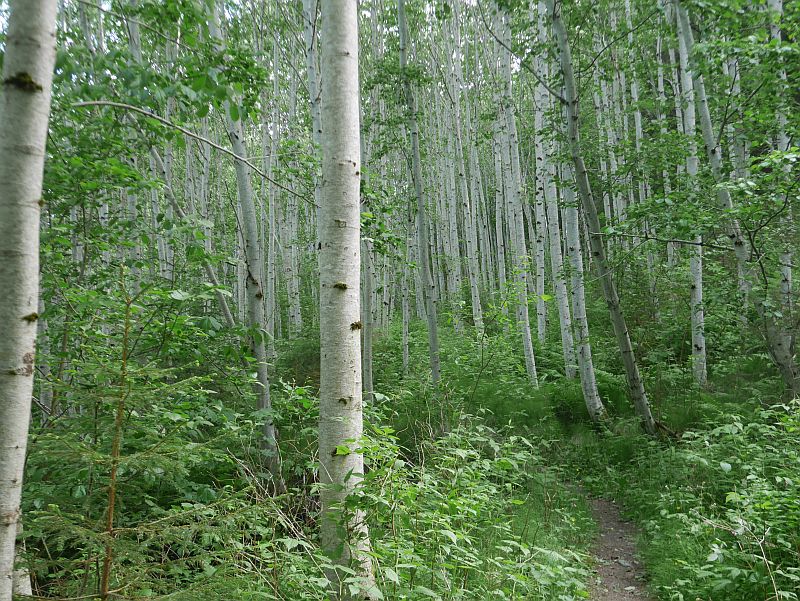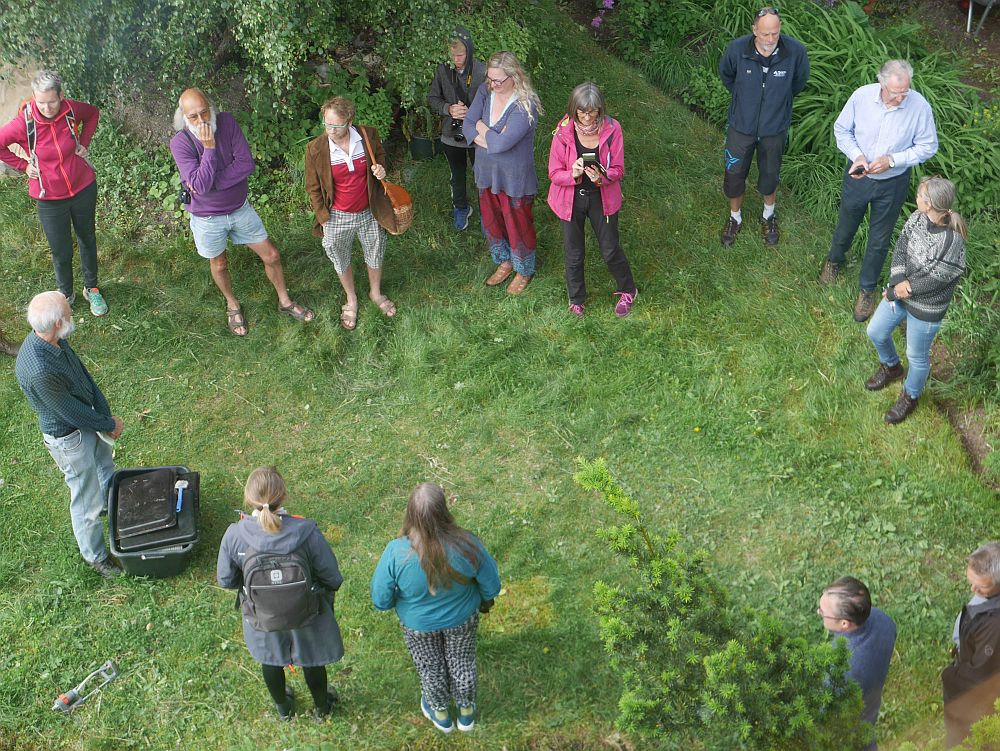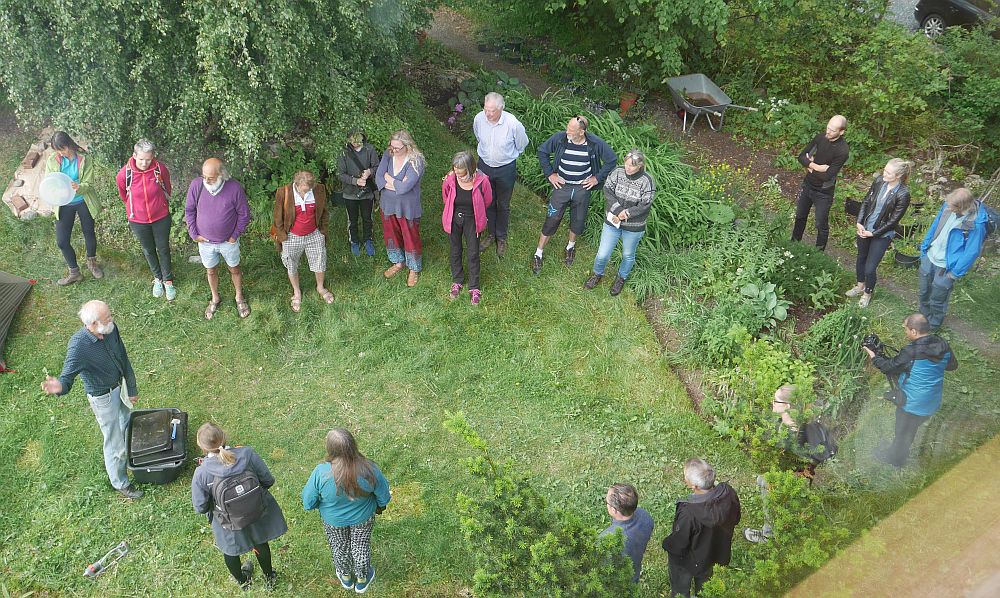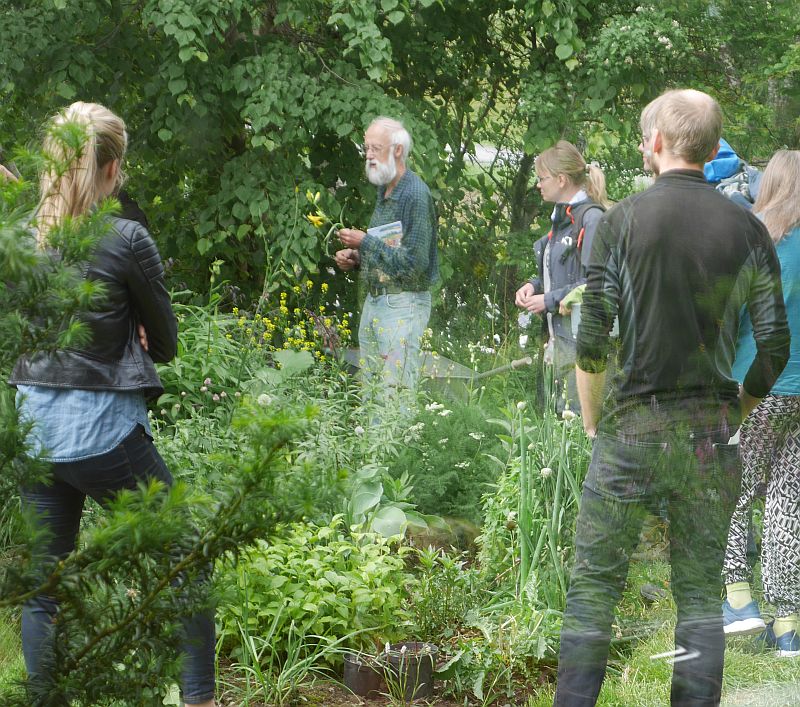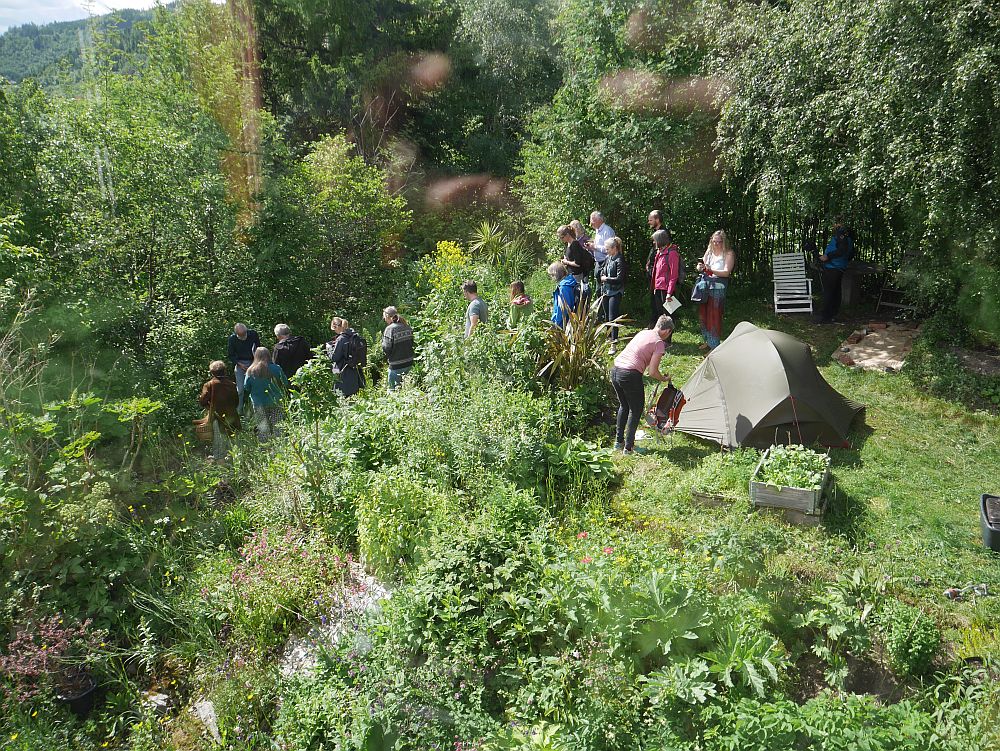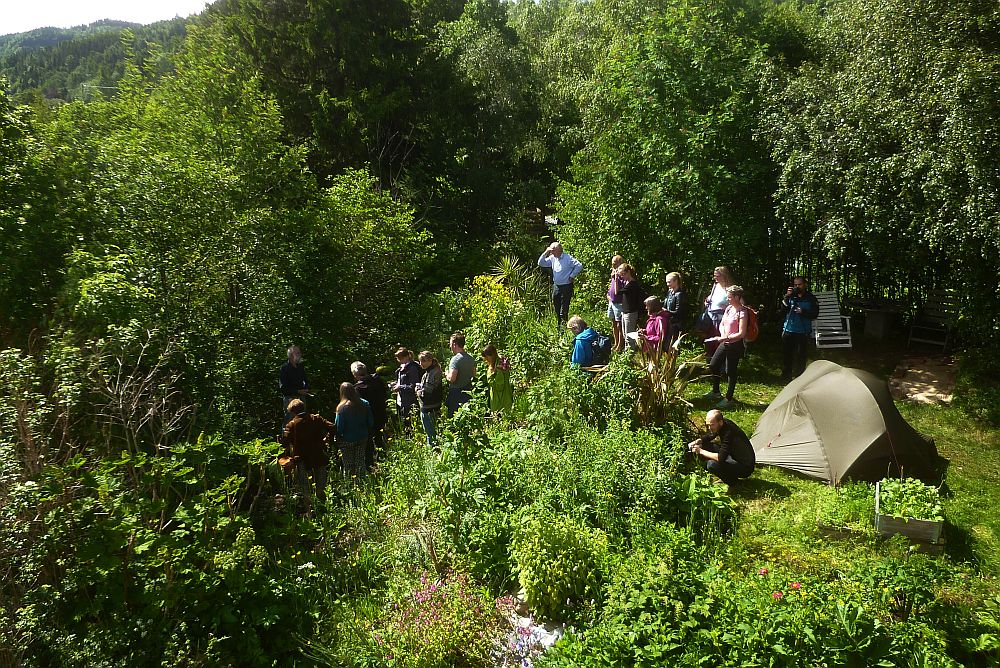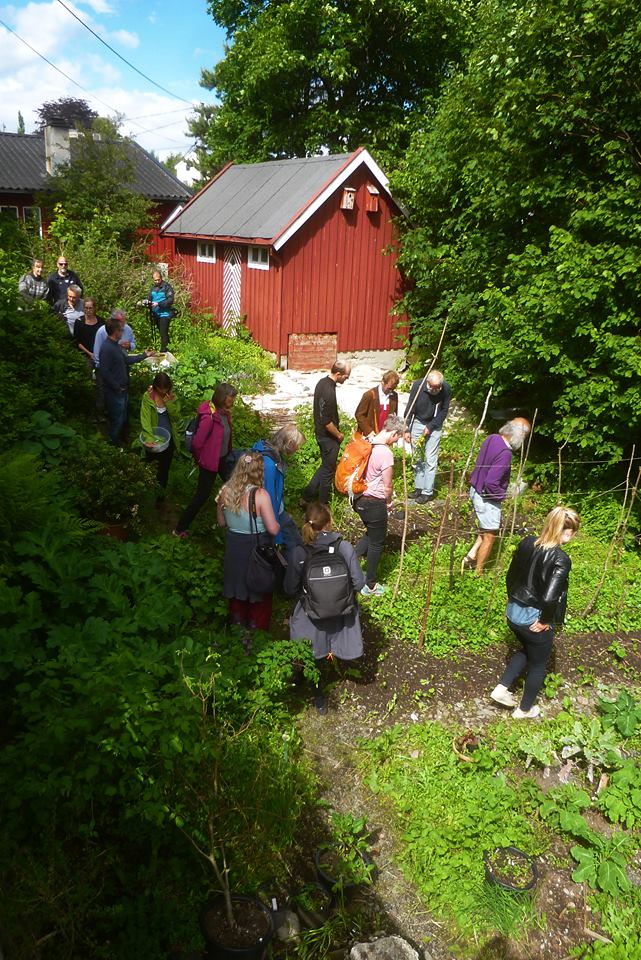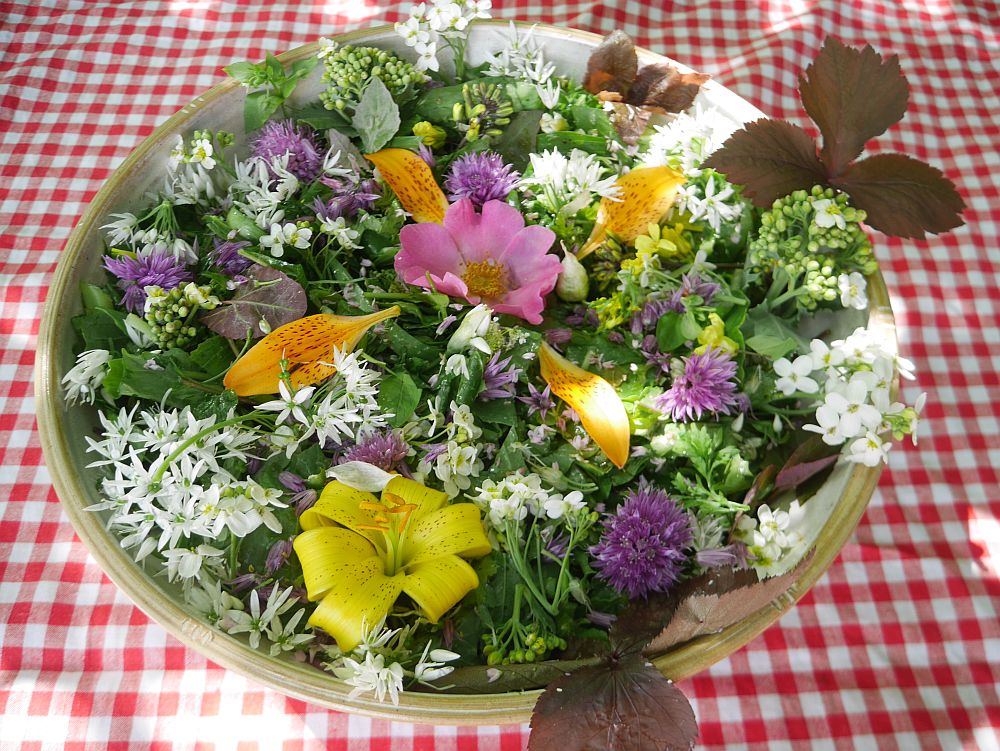Welcome to my new seed trade list for 2018-19.
16, 17 and 18 in brackets indicates the harvesting year for the seed. Concerning seed quantity: as I don’t have many plants of each species, seed quantity is limited in most cases. Therefore, for some species you may only get a few seeds. Many species are harvested in my garden. Others are surplus from trade and purchase. OUT: Means out of stock. NB! Cultivars do not always come true. I offer them anyway, but no guarantees to what you will get! NB! Traditional vegetables are at the end of the list with (mostly) common English names first.
NOTE: I don’t sell seed and I won’t be doing many trades this winter due to a busy schedule. However, I offer all plus many more to members of Norwegian Seed Savers (KVANN) through our spring (February) year book and autumn catalogue. To become a member go to http.//kvann.org and click on “Bli medlem”. It costs kr. 250 / year plus postage and packing.
For trades, I am mainly interested in uncommon hardy perennials, but I may also be interested in annuals.
NB! Not all plants in this list are edible, although almost all are!
Botanical Name (year of harvest)
Aconitum heterophyllum (16) Poisonous
Aconitum lycoctonum (17) Poisonous
Adenophora khasiana (17)
Adenophora lilliifolia (17)K
Adenophora pereskiifolia (17)
Adenophora remotiflora (17)
Adenophora tashiroi (17)
Adenophora triphylla v japonica (17)
Adenostyles alpina (17)
Akebia quinata (17)
Alcea nudiflora (16)
Alcea rosea (18)
Allium aflatunense (18)
Allium altyncolicum (18)
Allium amphibolum (16)
Allium atroviolaceum (18)K
Allium barsczewskii (18)
Allium caeruleum (16)
Allium caesium Ex-Kyrgyzstan (16)
Allium calocephalum (17)
Allium carinatum pulchellum (18)K
Allium carinatum pulchellum “Album” (18)K
Allium cernuum mix (17) K
Allium cernuum ‘Tall Mix’ (17)K
Allium cyathophorum (16) Yunnan, China
Allium darwasicum (16)
Allium decipiens (18) Type 1
Allium decipiens (18) Type 2
Allium decipiens ssp. quercetorum (17)K
Allium delicatulum (16)
Allium denudatum (16)
Allium dodecandontum (18)
Allium drummondii (16)
Allium douglasii (16)
Allium erubescens (18)
Allium fistulosum Ex-“Gribovskij 21” (18)K
Allium fistulosum Ex-“Svenskelauk” (17) (Norwegian heirloom onion)
Allium flavescens (18) (Open pollinated hybrid)
Allium flavum “Blue Leaf” (18,17)K
Allium globosum (18)
Allium hymenorrhizum (16)
Allium insubricum (16)
Allium jajlae (16)
Allium jesdianum ssp angustitepalum (16)
Allium korolkowii (18)
Allium kwakense (18)
Allium leucanthum (16)
Allium longicuspis (18)K From Kyrgyzstan
Allium macranthum (18)K
Allium mairei (18)K
Allium maximowiczii (18)K
Allium moly var bulbilliferum
Allium narcissiflorum (17)K
Allium nevii (18)
Allium nutans “Ex-Berkutenko” (18)
Allium nutans “Isabelle” (16) K
Allium nutans “Lena” (17) K
Allium nutans / flavescens hybrid? (Kazakhstan) (white flowers) (17, 16)K
Allium ovalifolium (17)
Allium ovalifolium var. leuconeurum (17)K
Allium pallasii (18,16)
Allium paniculatum (18)
Allium paradoxum normale (17) Two accessions
Allium cf. petraeum (18)
Allium petraeum Ex-Kyrgyzstan (16)
Allium przewalskianum Ex-Kyrgyzstan (16) 3 accessions from China!
Allium pskemense x cepa (18)K
Allium “Purple Sensation” (17)K
Allium rubens Ex-Kazakhstan (16)
Allium rubens (17)
Allium sarawschanicum (16)
Allium schoenoprasoides Ex-Kazakhstan (16)
Allium schoenoprasum “Bergsbygrenda” (17) Norwegian heirloom
Allium schoenoprasum “Black Pedicels” (17, 16)K
Allium schubertii (17)
Allium senescens x nutans hybrids (Ex-Mark McDonough) (16)
Allium senescens x nutans “Broad leaf” (Ex-Mark McDonough) (17, 16)K
Allium spirale (18)
Allium splendens (16)
Allium stenodon (18)K
Allium stipitatum? (16)
Allium stipitatum “Album” (16)
Allium stipitatum “Goliat” (18, 17)K
Allium strictum (17)K
Allium suworowii (18)
Allium thunbergii “Ozawa”(17)
Allium tauricola (16)
Allium tuberosum(18)
Allium tulipifolium (18)
Allium victorialis ‘Granvin, SW Norway’ (18) Wild collected
Allium victorialis ‘Ex-Hopen, Norway’ (17)K
Allium victorialis ‘Ex-Lofoten’ (18,16)K
Allium victorialis ‘Ex-Ringve’ (18)K
Allium victorialis ‘Ex-Røst’ (18, 17)K
Allium victorialis “Tei, Japan” (18)K
Allium wallichii (17,18)K Several OP accessions
Alnus viridis crispa var mollis (18)K
Althaea officinalis (17) 2 accessions
Amaranthus chlorostachys (18, 17)K
Anemone rivularis (18)
Angelica archangelica ssp archangelica v. Majorum “Vossakvann” (18)K (Voss Angelica) “Bordalen” plus one other accession
Angelica arguta (18)K Wild collected in Oregon
Angelica sylvestris “Vicar’s Mead” (18)K
Arabis alpina (18,17)K
Aralia californica (18,17)K
Aralia cordata (17) Several accessions
Asphodelus albus (18)
Aster ageratoides “Adustus Nanus” (16)
Athyrium felix-femina (16)
Atriplex hortensis rubra (17, 16)K
Barbarea verna (17)
Barbarea vulgaris (16)
Basella alba “Red” (16)
Beta maritima (17) from Cornwall, UK
Boehmeria tricuspis (18)
Bryonia alba (17)
Buddleja davidii (18)
Bunias erucago (17)
Calamintha nepeta “White Cloud” (16)
Caltha palustris himalensis (18)
Campanula alliarifolia (17)K
Campanula cervicaria (17)K
Campanula glomerata “Alba”(17)K
Campanula latifolia “Purple White Ladies” (18)
Campanula medium (17)
Campanula persicifolia “Alba Coronata”” (15)
Campanula punctata hondoensis (16)
Campanula rapunculus (17)
Caragana arborescens (16)
Cardamine uliginosa (17)
Cardiocrinum spp (16) Japan
Caucalis platycarpos (16)
Centaurea aspera (16)
Chelidonium majus (18)K
Chenopodium giganteum (17)
Chenopodium formosanum (17)K (Taiwanese Quinoa)
Chondrilla juncea (17)S
Cicerbit alpina (18)K
Cicerbita plumieri (18)
Cirsium canum (17)K
Cirsium eriophorum (17)K
Cirsium erisithales (16)
Cirsium heterophyllum (17) K Wild, Malvik
Cirsium japonicum (18)
Cirsium tuberosum (17)K
Claytonia virginiana (18)K
Clematis alpina (18)
Clinipodium chinense v parviflorum (17) From Japan
Clinipodium vulgare (18)
Clintonia borealis (17)K
Codonopsis grey-wilsonii “Himal Snow” (18)
Commelina tuberosa (16)
Conopodium majus (18)K
Crambe cordifolia (18) K
Crambe maritima (18,17)K
Darmera peltata (17)
Dianthus albus (17)K
Dipsacus japonicus (16)
Disporum smithii (16)
Dracocephalum integrifolium (16)
Dystaenia takesimina (18)K
Echinochloa esculenta (17)K
Elaeagnus umbellata (17)K From Hurdal, Norway
Epilobium latifolium (16)
Elschscholtzia californica (17)
Elsholtzia ciliata (18,17)S
Eupatorium cannabinum (17)K
Fedia cornucopiae (18, 16)S,K
Fragaria vesca “ECOS” (17)
Fragaria virginiana “ECOS” (17)
Fuertesimalva limensis (17)
Geranium thunbergii (17)
Girardinia cuspidata (17)
Girardinia septentrionalis (17)
Gladiolus imbricatus (16)
Hablitzia tamnoides (Mixed) (18)K
Hemerocallis lilioasphodelus (18)K
Hosta “Frances Williams” (H. sieboldiana “blood”) (18,17)K
Hosta sieboldiana Ex-Mira (17)K
Hosta sieboldiana Mix (18)K
Hosta gracilima (18)
Hypericum perforatum (17)K
Hyssopus officinale (18)
Inula helenium (17)K
Ipomoea aquatica (17)K
Kalimeris incisa “Madiva” (17, 16)
Laserpitium siler (18)
Lavatera arborea variegata (17)K
Lepidium latifolium (18)K
Leucanthemum maximum “Alaska” (16)
Leucanthemum x superbum “Marconi” (16)
Levisticum officinale (18)K
Ligularia dentata “Desdemona” (18)
Ligularia fischeri (18, 17)K
Lycopus asper (17)
Malva verticillata (17)S
Malva mohileviensis (18,17)K
Malva moschata “Wild fro Kløfta, Norway” (17)
Malva subovata (17)
Malva sylvestris “Braveheart” (16)
Marrubium vulgare (16)
Mertensia ciliata (18,17)K
Mertensia paniculata (18)K
Molopospermum peloponnesiacum (18)K
Nectaroscordum siculum (17)
Nepeta x fassenii “Six Hills Giant” (3 seeds)K
Orychophragmus violaceus (17)K
Oxyria digyna (18)K
Papaver somniferum “Mix” (17)K
Patrinia triloba v. takeuchiana (17)K
Persicaria virginiana “Painter’s Palette” (17)
Peucedanum terebinthaceum (17)
Phyteuma nigra (18)K
Phyteuma orbiculare (18,17)K
Phytolacca americana (18)K
Podophyllum emodi (17)K
Polygonatum odoratum “Chollipo” (17)
Polygonum divaricatum (17)K
Prenanthes purpurea (17)K
Primula elatior “Magenta” (17)
Primula kewensis (17)
Primula sieboldii Mix (17)
Prunella vulgaris “Pagoda” (17)K
Pycnanthemum muticum (15)
Rhodiola rosea (17)K
Rhus typhina (16)K
Ribes mandschuricum (18)K
Ribes petraeum biebersteinii (16)K
Rubus idaeus “Sunset” (17)
Rubus occidentalis “Black Hawk” (17, 16) K
Rubus occidentalis “Bristol” (17) K
Rubus phoenicolasius (17)K
Rumex acetosa “Belleville” (17, 16)
Rumex acetosa “Krupolistny” (17)K
Rumex acetosa “Shirokolistny” (18)K
Rumex patientia (18,17)K
Rumex sanguineus (17)K
Rumex scutatus “Wild” (18)K
Rumex scutatus “Silver Leaved” (18)K
Rumex vesicarius (18) K
Sanguisorba canadensis (17)K
Sanguisorba minor (17)K
Sanguisorba officinalis (17)K
Sanguisorba officinalis “Tanna” (17)K
Sanguisorba stipulata (17)
Sanguisorba tenuifolia “Purpurea” (17)K
Saponaria officinalis “Pink” (18)K
Saxifraga fortunei “Akibare”(17)
Saxifraga fortunei “Fukujyu” (17)
Scabiosa japonica var alpina (17)
Sidalcea oregana (17)
Sideritis syriaca (18, 17)K
Silene latifolia (18)
Sinapis alba (17)S
Sium sisarum (18)K (Skirret)
Smilax hispida (17)K
Sonchus oleraceus “Giant Oregon” (16)S
Sonchus palustris (17) K
Stachys palustris (17) from Hurdal
Streptopus amplexifolius (18)K
Taraxacum ceratophorum (18)K
Taraxacum officinale “Moss-leaved” (18)K
Taraxacum pseudoroseum (18, 16)K
Taraxacum rubifolium (18, 17)K (Red-leaved dandelion)
Thalictrum aquilegifolium (18)
Thalictrum delavayi (17)
Thlaspi arvense (17) K
Tigridia pavoniana (17)K
Tradescantia ohiensis (18)K
Tricyrtis spp. (17)K
Trillium erectum “Cream” (17)
Urtica galeopsifolia (18) (Almost) stingless
Urtica gracilis (17)
Valeriana officinalis (17)K
Viola cornuta Alba (17)
Vegetables
Bean ”Armenian Asparagus Bean” (14)K
Bean ”Klosterbønner” (17)K Norwegian heirloom (Phaseolus vulgaris)
Bean ”Turkish Beans from Geitmyra” (14)
Broccoli Raab (Cima de rapa) “Dietrich’s” (15) (Flowering turnip tops)
Broccoli Raab (Cima de rapa) “Foglia d’ulivo” (16) (Flowering turnip tops)
Broccoli Raab (Cima de rapa) “Sessantina” (16) (Flowering turnip tops)
Burdock (15) (5 different Japanese varieties) (15)
Celery “Red stem” (15)
Chicory “Barba di Cappuccino” (15)
Chicory “Bianca” (15)
Chicory “Catalogna Frastagliata” (15)
Chicory “Di Chiavari” (15)
Chicory “Etardo” (17)
Chicory “Orchidea Rossa” (13)
Chicory “Rossa vi Verona sel. Arca” (18)
Chicory “Selvatico da Campo” (15)
Chicory “Variegata di lusia (precoce)” (15)
Chinese Cabbage “Heading” (14) (Japanese seed)
Endive “Cornet de Bordeaux” (16)
Kale “Couve Galega” (18)K Two accesions
Kale “Helgoland Kale” (18) K
Lamb’s Lettuce “Baron” (16)
Lettuce “Cocarde” (17)
Lettuce “Freckles” (17)
Lettuce “Navarra” (17)
Lettuce “Oakleaf” (17)
Lettuce “Red Salad Bowl” (16)
Lettuce “Rossa Ricciolina da Taglio” (16)
Lettuce “Ruby Gem” (16)
Lettuce “Summer Bibb” (16)
Lettuce “Senorita” (17)
Lettuce “Tuska” (17)
Mustard Greens ‘’Giant Red” (18)K
Oriental Greens ‘Choy Sum Purple’ (15)
Oriental Greens ‘Choy Sum Purple Flowering’ (15)
Oriental Greens ‘Early Mibuna’ (14)
Oriental Greens ‘Frilly’ (13)
Oriental Greens ‘Green Wave” (13)
Oriental Greens ‘Kekkya Takana” (14)
Oriental Greens ‘Misome’ (14)
Oriental Greens ‘Mispoona’ (16)
Oriental Greens “Red Mizuna” (14)
Oriental Greens “Red Streaked Mizuna” (14)
Oriental Greens “Southern Giant” (13)
Oriental Greens “Swollen Stem Tsai Tsai Round” (12)
Oriental Greens “Xue li Hong” (14)
Parsnip (18)K
Pea “Carlin Pea” (18)K
Pea “Golden Sweet” (17)K
Pea “Robinson” (18)K
Pea “Salmon Flowered Crown Pea” (18, 17, 16)K
Quinoa “Stephe” (18)K
Rocket (Diplotaxis tenuifolia) “Dragon’s Tooth” (16)K
Rocket (Diplotaxis tenuifolia) “Wildfire” (16)K
Rocket (Diplotaxis tenuifolia) “Rustic Arugula” (16)K
Rocket (Diplotaxis tenuifolia) “Rustic Style” (16)K
Rocket (Diplotaxis erucoides) “Wasabia Arugula” (16)K
Turnip “Purple Top Milan” (17)


